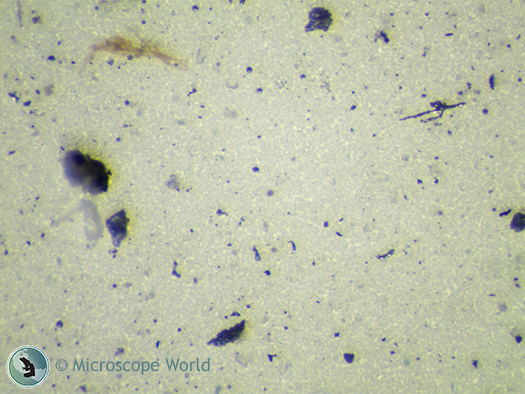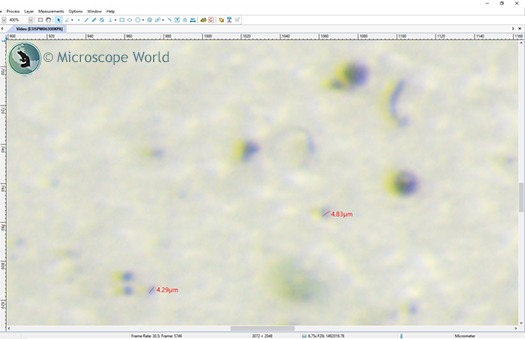Stereo Microscope 225x Myth
Oct 14th 2018
At Microscope World we occasionally receive emails from customers who want to know whether we have a stereo microscope that can measure down to 1 micron. They mention stereo zoom microscopes they found on other microscope websites that offer 225x magnification(!), which would provide a field of view around 760 microns and allow digital measurements after adding a microscope camera.
Indeed, these 225x stereo microscopes can be used for measuring as long as you are not terribly concerned with accuracy. The problem is most of the magnification is provided by 25x eyepieces, which won't help you with digital measurement.
Here are a couple of photos to illustrate: First we have a filter patch captured using a stereo microscope at its maximum 4.5x zoom magnification using a 2x auxiliary lens and 10x eyepieces. When looking through the eyepieces, this is 90x total magnification (4.5 x 2 x 10 = 90x).

Next, we have captured the same filter patch, using the same stereo microscope at 4.5x zoom magnification with the same 2x auxiliary lens, but this time we used 25x eyepieces.

If you are looking for hidden differences between the two images you can stop. There is no difference. That is because the image that travels up from the objective lenses bypasses the eyepieces entirely when traveling up the camera port. There is no added magnification at the camera when adding 25x eyepieces to a microscope.
"Ah, but with a microscope camera you can zoom-in digitally using the camera software, right?" That is right, however, the more you zoom, the more pixelated and blurrier the picture becomes. Remember, resolution is driven by the optical lenses in the microscope and can not be improved by the camera.
Here is a screen-shot of the same filter patch as it displays on our PC using the camera software increase to the maximum 400% size.

The software will let you make measurements with this setup. The problem is the edges of the smaller particles (1-5 microns) can not be established with any certainty. The two particles measured on-screen appear to be 4.83 and 4.29 microns, respectively, but we can't be certain we started and ended the measurement on the particle's actual edge. There is simply nowhere to go from here so there is no way to draw out a clearer image.
In conclusion, if the work you are hoping to do requires reflective (top) illumination and you need to measure particles down to 1-5 microns with confidence, a stereo microscope system is not what you need. You will need to move over to a metallurgical microscope such as the Motic BA310MET metallurgical microscopes or the Fein Optic metallurgical microscopes.
As with most microscopy problems, there is always an alternative to get the job done.
If you have questions regarding microscope magnification or how many microns you can measure at different magnifications using a stereo microscope contact Microscope World and we will be happy to help.
See our Stereo Microscope buying guide




